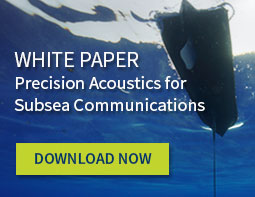Here at Liquid Robotics, we have always had a special place in our hearts for humpback whales. Many of you may know the original application for the Wave Glider was to capture the “singing” of humpback whales as they migrated to Hawai’i. Working with the Jupiter Research Foundation (JRF), a …Read more
Precision Acoustics for Subsea Communications
November 15, 2017
How can you measure seafloor motion with millimeter-scale accuracy through two miles of seawater? The satellite-based GPS technique used on land doesn’t work in the ocean, so we turn to GPS-Acoustics. When you combine GPS and precision acoustics, made possible by advances in sensor technology, the result is incredibly accurate …Read more
Partnerships to Help Protect and Sustain the World’s Marine Sanctuaries
October 25, 2017
Over the past month, Liquid Robotics has been honored to join two global leaders in the fight to protect and sustainably manage our marine sanctuaries and ecosystems. In collaboration with the Australian Institute of Marine Science (AIMS) and separately with NOAA’s Office of National Marine Sanctuaries, Wave Gliders are helping …Read more
An Admiral’s Perspective: Cost-Effective Monitoring of Australia’s Vast Ocean Territory
September 25, 2017
If we don’t know the ocean, we can’t measure or predict its impact on our landmass and our future prosperity. Australia has 25,000 km of coastline and 10,000 sq. km of marine territory to manage. How do you keep tabs on this vast area? Without spending a lot of money, …Read more
GEOMAR: Tracking Seafloor Motion with Wave Gliders
September 6, 2017
Off the coast of northern Chile, where the Nazca plate meets the South American plate, scientists from GEOMAR Helmholtz Centre for Ocean Research Kiel have installed a network of sensors to measure and track seafloor motion. Their goal is to better understand earthquake and tsunami risk in an area where …Read more
